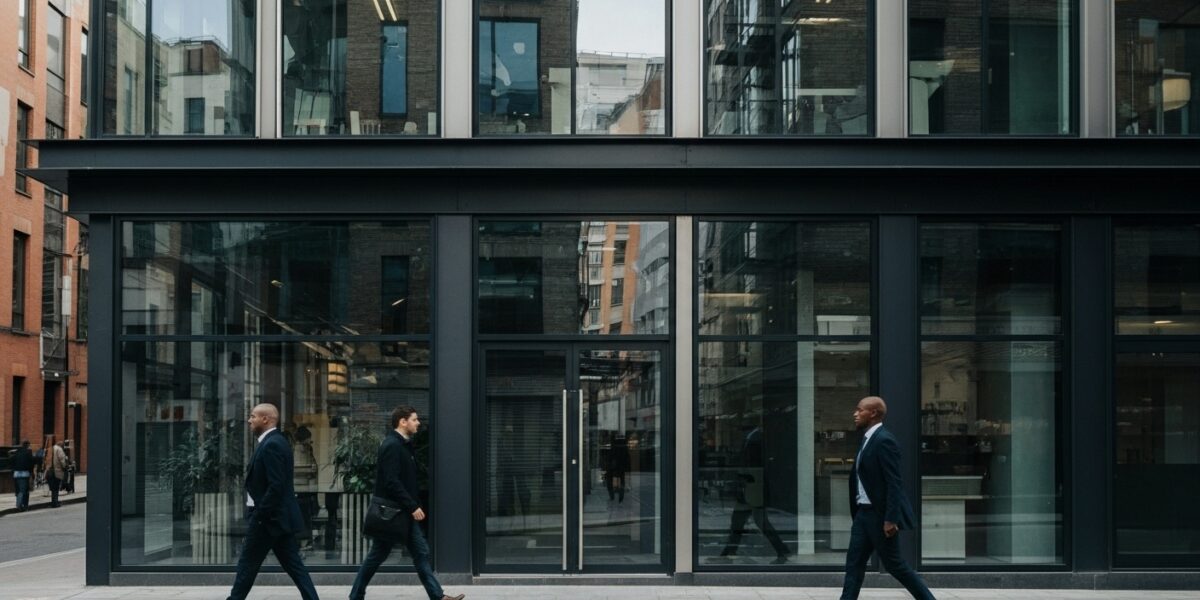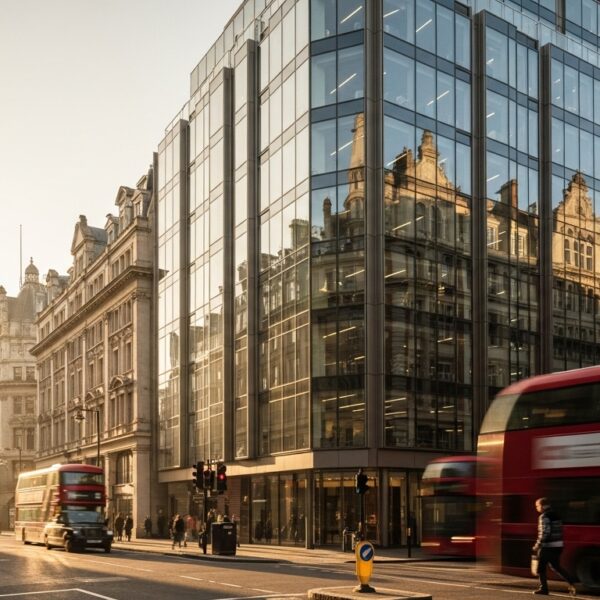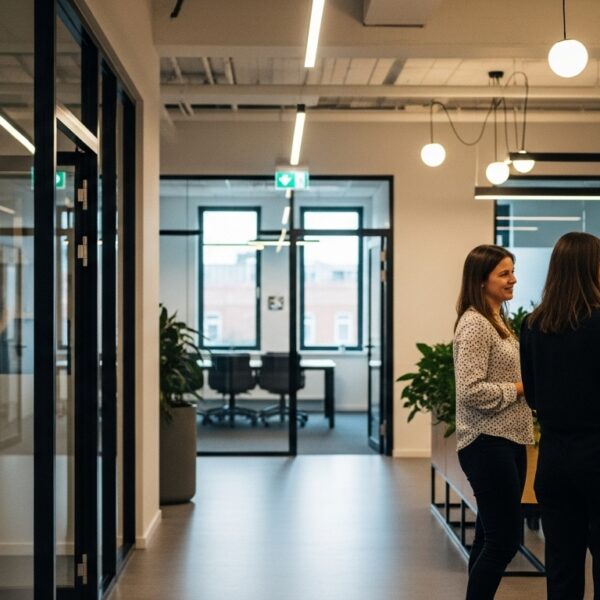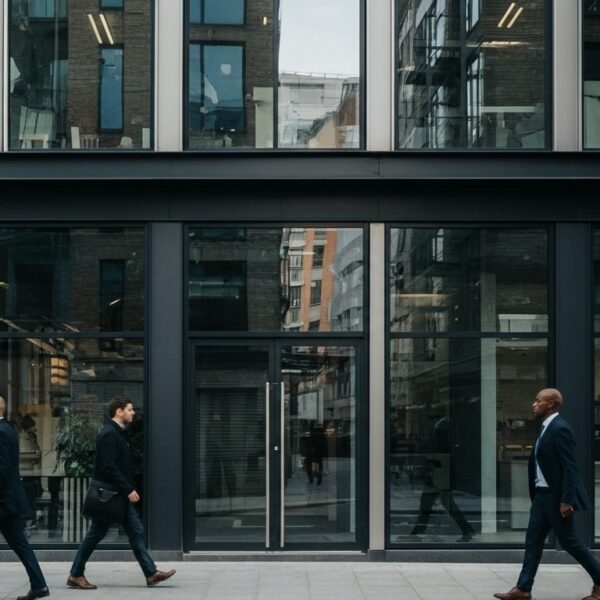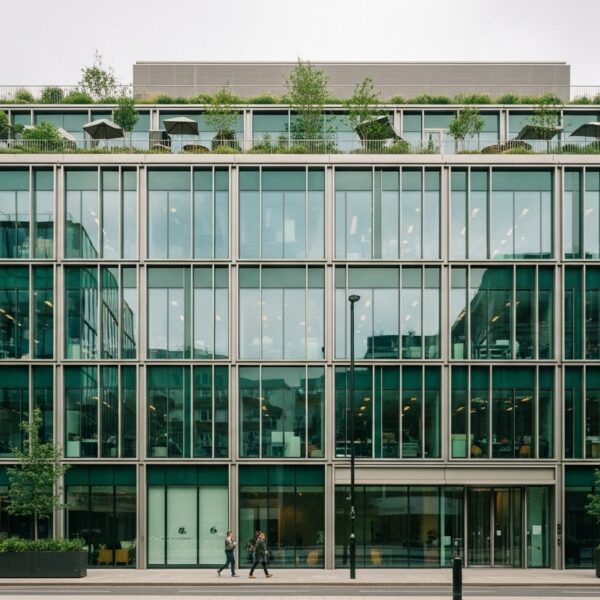Central London may dominate the skyline, but the sharper real estate story is unfolding further south. A wave of residential conversions is shrinking office stock even as demand grows, creating a rare supply imbalance. For landlords, investors and occupiers, this opens a strategic window where scarcity fuels rental growth and innovation.
Why is South London’s office space market tightening?
Much of South London’s older stock is being lost to residential conversions. In Croydon alone, around one million sq ft of office space is set to disappear over the next two years under permitted development rules, according to SHW Office Focus Q1 2025.
Vacancy is already critically low at just 1.3%, pushing occupiers to compete for fewer, better spaces.
This trend is fuelling rising rents across hotspots. Croydon has achieved £42 per sq ft, Bromley £37.50 per sq ft and Battersea and Nine Elms are edging toward £60 per sq ft for Grade A stock, according to SHW and Oktra research.
While still below West End and City levels, the upward trajectory signals catch-up growth with stronger yield potential than established markets.
Who is driving office demand?
South London combines connectivity with one of the youngest, most ambitious populations in the capital.
The Lambeth Council report “The Future of Sustainable Work” highlights how talent catchments in Brixton, Waterloo and Vauxhall deliver millions of workers within one hour of travel, including residents in the 25 to 34 age band who are driving demand for collaborative and sustainable workplaces.
Workspace strategies in these districts are increasingly shaped by hybrid models and ESG goals. Refurbishment dominates supply, with 83% of new space in London delivered through repositioning rather than ground-up development. Occupiers want energy-efficient, flexible offices that reinforce culture while competing for a skilled workforce.
Key takeaways from South London’s office market include:
- Conversion to residential use is rapidly eroding traditional stock (SHW)
- Vacancy rates in key centres like Croydon are close to zero (SHW)
- Prime rents range from £37.50 to nearly £60 per sq ft depending on district (SHW, Oktra)
- Demand is driven by young, mobile talent clusters (Lambeth Council)
- Preferences are shifting to hybrid-ready, ESG-compliant space (Oktra)
How is the flight to quality shaping South London offices to rent?
The South London office market is being reshaped by a clear “flight to quality”. Occupiers are opting for refurbished Grade A buildings that meet higher sustainability and hybrid working standards. SHW notes that rents for repositioned stock can be nearly double those achieved by older secondary space, underlining the value of modernisation.
This rental premium reflects the growing importance of ESG compliance, flexibility and workplace experience in attracting tenants. Businesses want efficient layouts, low-carbon footprints and amenities that support collaboration and wellbeing.
JLL research cited by Lambeth Council shows that post-pandemic demand is shifting toward spaces designed to enhance culture and productivity rather than simply providing desks. The office is now seen as a strategic tool to draw talent and foster innovation.
For investors and landlords, the pressure is clear. With stock eroded by residential conversions, only those who reposition assets to modern standards will capture the strongest demand. The widening gap between prime and secondary space creates an arbitrage opportunity for operators willing to invest in upgrades.
Those able to deliver sustainable, flexible buildings before demand fully peaks will secure a competitive edge, especially as younger, mobile workforces dominate South London catchments.
How do South London’s micro-markets shape office workspace strategy?
South London is not a single story but a collection of micro-markets, each influenced by sector strengths and community character. Lambeth leads on scale with a six million sq ft pipeline geared toward life sciences and creative industries.

Brixton leans into its identity as a Creative Enterprise Zone with an emerging cluster of tech-led startups. Waterloo is home to multinationals and life sciences anchors.
Smart operators recognise that workspace design must align with sector priorities. A flexible lab-ready building serves Waterloo’s science corridor differently than creative studios in Brixton. Brixton tenants want adaptable, cost-sensitive layouts while corporates in Waterloo prioritise ESG credentials and transport connectivity.
Lambeth’s pipeline reinforces how expansion must be both sustainable and tailored to high-growth fields like digital, low carbon and life sciences.
Key strategic considerations for operators include:
- Match workspace design to sector demands
- Build in flexibility for hybrid work and future shifts
- Align with occupier ESG priorities to remain competitive
- Recognise the role of public realm and local amenities in tenant attraction
- Draw on proven retrofit strategies, with refurbishment as the primary delivery model for new space
Refurbishment is particularly valuable in South London where stock conversion into housing restricts supply, making retrofit one of the few scalable ways to add Grade A-quality space. Investors who combine intelligent refurbishments with an understanding of local occupier needs can capture both resilience and rental growth.
Why adaptability defines South London’s office frontier
The challenges are clear: South London’s supply is tightening, vacancy rates are at historic lows, and occupiers are competing for sustainable Grade A space that supports hybrid work. Yet where some see scarcity, others see opportunity.
By combining market expertise with access to flexible, off-market options, ADAPT helps businesses and investors secure spaces that match both new workplace standards and the district-specific demands of South London.
Instead of struggling to find a viable office in an overheated market, ADAPT clients gain tailored solutions – whether that means repositioned space in Croydon, lab-ready capacity in Waterloo, or creative, collaborative layouts in Brixton.
This ensures clients not only compete for space but confidently secure environments that lift culture, attract talent and create long-term value.
With two decades of experience bridging fast-changing market conditions and future-focused workplace strategies, ADAPT has guided hundreds of scaling businesses through moments just like this.
South London isn’t in an office space crisis moment – it’s a moment of clarity. Businesses that adapt early will lock in future-proof spaces in South London or anywhere else, while others risk chasing a shrinking pool of amazing office options. Our job at ADAPT is to make sure our clients are always in the first camp.”
Chris Meredith, ADAPT CEO & Founder
Can you get ahead of South London’s shifting office market?
If your business is planning a move, considering expansion, or recalibrating office needs in light of hybrid work – now is the time to act. The market’s scarcity means waiting often costs more, while future tenants will demand greater flexibility, stronger ESG credentials and smarter space design.
With ADAPT, you get more than a flexible office that fits your culture. You also gain exclusive terms and a workspace strategy that works today and grows with you tomorrow. That’s what makes ADAPT different. Begin your journey here.
